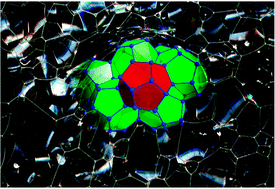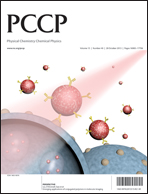sp3-Bonded silicon allotropes based on the Kelvin problem†
Abstract
The Kelvin problem, how to partition three-dimensional space into cells of equal volume with minimal area, is a fascinating one. Aggregations of bubbles are naturally physical illustrations of the Kelvin problem. And the superconductor Na8Si46 as an inspiration leads to an amazing discovery of the Weaire–Phelan (WP) structure of foam – the optimal solution to the Kelvin problem to date. Here based on the structural similarity between sp3-bonded silicon allotropes and the solutions to the Kelvin problem, a series of new sp3-hybridization silicon allotropes, named “Kelvin Silicons”, are presented. Furthermore, the structural stability and electronic properties of these new silicon allotropes are investigated using density-functional theory (DFT) calculations. The results show that Kelvin Silicons are structurally stable semiconductors with indirect bandgaps in the range of 0.17–1.40 eV, and their bulk moduli are about 75.9–88.5% that of the diamond phase. The simulated X-ray diffraction spectra of the new silicon crystalline structures would provide more information for possible experimental observations and synthesis.


 Please wait while we load your content...
Please wait while we load your content...